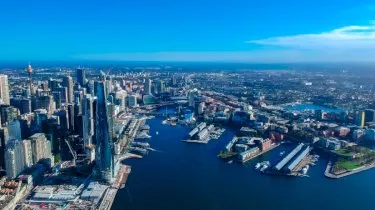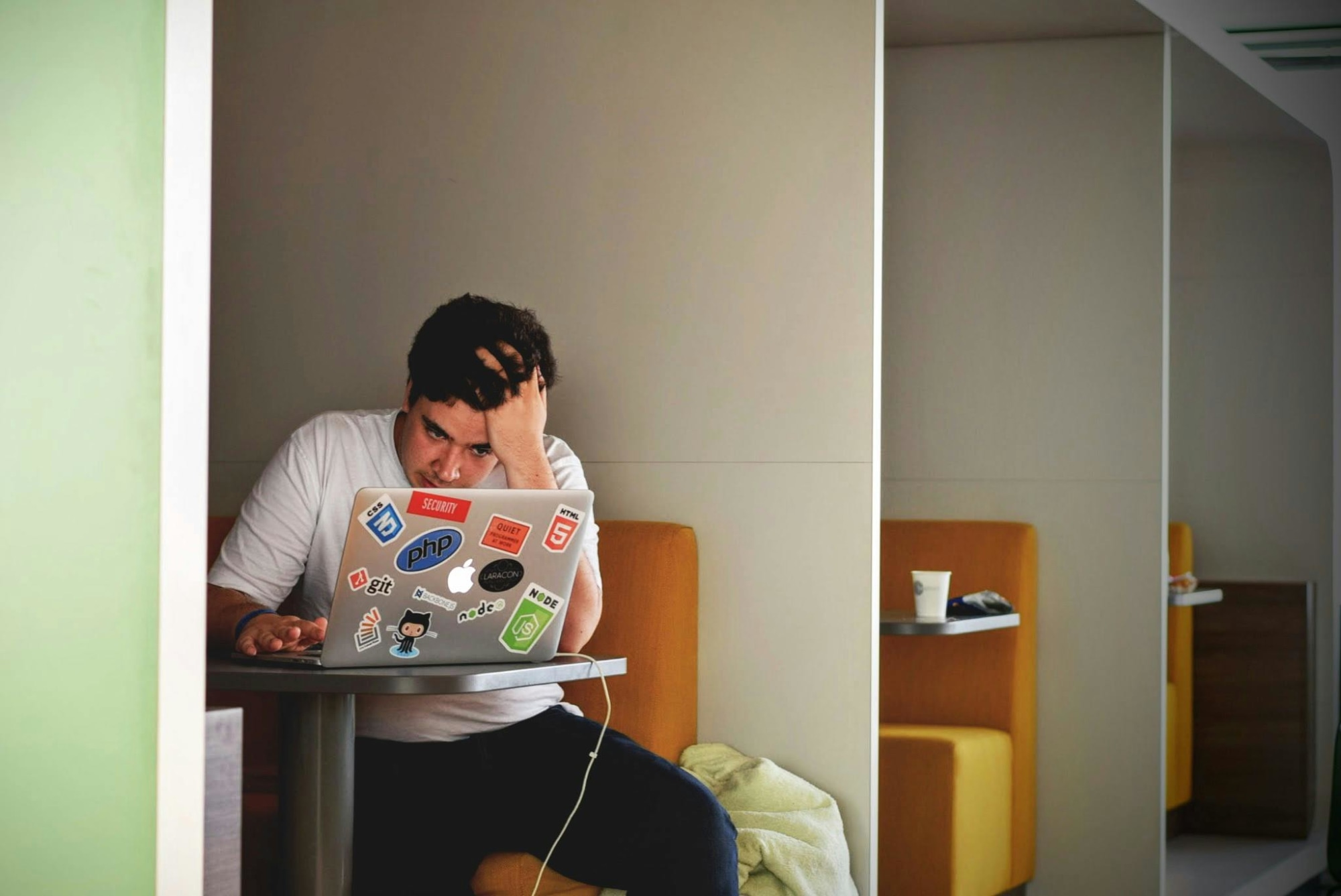Invest
Sydney counts cost of lockdowns
The extension of Sydney’s lockdown is now estimated to cost the Australian economy up to $7 billion, but consumer spending and government support are set to limit the damage done to the nation’s GDP, an economist predicts.
Sydney counts cost of lockdowns
The extension of Sydney’s lockdown is now estimated to cost the Australian economy up to $7 billion, but consumer spending and government support are set to limit the damage done to the nation’s GDP, an economist predicts.

AMP Capital chief economist Shane Oliver said the Greater Sydney lockdown is costing the NSW and Australian economies around $1 billion a week.
With the lockdown set to run to “at least” 30 July, or five weeks in total, the current economic outlay is roughly $5 billion.
However, Dr Oliver predicted the lockdown could be extended for another two weeks when comparing cases and lockdowns between Sydney and Melbourne last year.
The prediction of restrictions remaining until mid-August would see Australia’s GDP contract by $7 billion.

Unemployment to temporarily spike
Dr Oliver has predicted this fall in GDP and lockdowns are likely to see a temporary spike in Australia’s unemployment rate.
According to him, the hit to the NSW economy could push unemployment up temporarily towards 5.5 per cent from the current 5.1 per cent. Despite this, however, he does believe unemployment would quickly resume its downtrend later in the year, possibly shrinking to below 5 per cent at year end.
“Beyond the next few months, there remains reason for optimism as vaccination picks up, ultimately enabling a more sustained and confident reopening through next year,” Dr Oliver said.
“This, combined with significant pent-up demand, and an even higher level of savings after the NSW lockdown, along with ongoing fiscal stimulus and ultra-easy monetary policy, could result in compensating stronger growth in 2022.”
Consumer confidence rises
On the upside, Dr Oliver believes the cost to the economy will be short-lived, despite the pain for businesses, with consumer confidence being a key driver towards future success.
Citing figures from the Westpac-MI consumer sentiment survey, which showed the consumer index up 1.5 per cent in July to 108.8, Dr Oliver predicted a bump in spending in the next quarter.
The biggest bounceback was seen in the category ‘family finances versus a year ago’, which jumped 4.6 per cent on the month for an index reading of 93.7.
This jump in confidence has Dr Oliver certain Australia’s economic damage could be greatly offset by pent-up demand.
“Assuming other states keep growing and NSW rebounds through September, helped by pent-up demand and the lagged impact of support payments, the extended lockdown will still likely flatten GDP growth this quarter (we were assuming growth of 1 per cent qoq),” Dr Oliver said.
But while the economy will see stronger results in September, overall growth is predicted to fall slightly for the year.
“Allowing for a solid rebound in the December quarter, this will likely push GDP growth in Australia through the year to the December quarter down to around 4 per cent yoy from our previous forecast of 4.75 per cent.”
Business confidence falls
While consumers are confident they’ll get through lockdown, Dr Oliver pointed to a drop in business confidence and the impact it has on the nation’s economy.
According to stats released in National Australia Bank business survey, which was conducted between 18-30 June, business conditions have fallen from a record high and corporate confidence has suffered as four cities imposed lockdowns in June.
The decline in business conditions was underpinned by falls across trading, profitability, employment and forward orders, the big four bank shows.
“Unsurprisingly, business confidence has taken a hit,” NAB chief economist Alan Oster said.
“This was particularly evident in NSW and Queensland, but confidence was generally softer elsewhere.”
NAB’s Alan Ostersaid is confident, however, in a fairly rapid rebound as restrictions are lifted.
“Business conditions also saw a sharp fall in the month, driven by a weaker reading for Victoria.
“This likely reflects the impact of the lockdown that started in late May, which was eased in a series of steps over June.”
Governments step in to offset the losses
With the costs of lockdowns continuing to rise, the federal and state governments have stepped in to support the economy, with Dr Oliver highlighting this will offset much of the damage to the nations GDP.
Prime Minister Morrison has announced an increase in the COVID-19 Disaster Payment and a new business support package.
Currently, the disaster payment rates are $325 if you have lost less than 20 hours of work a week, and $500 if you have lost more than 20 hours a week.
Under the changes, the payments will increase to $375 and $600, respectively.
The Commonwealth will also fund 50 per cent of the cost of a new small and medium business support payment to be implemented and administered by Service NSW.
Eligible entities will receive 40 per cent of their NSW payroll payments, at a minimum of $1,500 and a maximum of $10,000 per week, assuming they have seen turnover fall by 30 per cent compared with an equivalent two-week period in 2019.
The new small-to-medium business support payment will be available to non-employing and employing entities in NSW, including not-for-profits, with an annual turnover between $75,000 and $50 million.
“Government income support costing around $500 million a week – entailing payments to businesses contingent on them maintaining their workforce and payments to workers similar to what they would have received from JobKeeper in late last year – will help soften the blow but will mainly serve to help keep the economy resilient so it can bounce back quickly once the lockdown ends,” Dr Oliver concluded.
About the author

About the author


Economy
CPI data another piece in RBA's interest rate decision puzzle, says REIA
The latest Consumer Price Index (CPI) data from the Australian Bureau of Statistics (ABS) shows that inflation rose 3.4% in the 12 months to February 2024, unchanged from the previous two months, ...Read more

Economy
Including passive job seekers in unemployment measure doesn't impact economic cycle view, study finds
New research from e61 Institute has found that while current unemployment measures may not capture all job seekers, broader definitions that include passive job searchers do not provide better ...Read more

Economy
Survey reveals heightened job security concerns among IT workers in 2024
A recent survey conducted by Authority Hacker has revealed that 89.66% of IT workers in the United States have increased concerns about job loss in 2024. Read more

Economy
Australian founders adapt to the challenging fundraising environment with optimism and strategic shifts
The landscape for start-up funding in Australia has been increasingly challenging, but this has not dampened the spirit of the country's entrepreneurs. Read more

Economy
Signs point to possible US economic 'soft landing' in ClearBridge analysis
The US economy may be steering towards a 'soft landing' despite mixed signals from the stock market, according to a recent analysis by ClearBridge Investments. Read more

Economy
Alternative fund managers predict capital raising surge in 2024
Alternative investment fund managers are predicting a sizable increase in capital raising efforts in 2024, according to a global study by Ocorian, a leading alternative investment fund administratorRead more

Economy
Understanding the economic indicators that affect your earnings
The landscape of personal finance is profoundly influenced by broader economic trends and indicators. Read more

Economy
Navigate market turbulence with expert advice: no crystal ball needed
In an era fraught with investment market uncertainties, from fluctuating interest rates to geopolitical strife, seasoned market experts are guiding investors through the mire, offering sage advice on ...Read more

Economy
CPI data another piece in RBA's interest rate decision puzzle, says REIA
The latest Consumer Price Index (CPI) data from the Australian Bureau of Statistics (ABS) shows that inflation rose 3.4% in the 12 months to February 2024, unchanged from the previous two months, ...Read more

Economy
Including passive job seekers in unemployment measure doesn't impact economic cycle view, study finds
New research from e61 Institute has found that while current unemployment measures may not capture all job seekers, broader definitions that include passive job searchers do not provide better ...Read more

Economy
Survey reveals heightened job security concerns among IT workers in 2024
A recent survey conducted by Authority Hacker has revealed that 89.66% of IT workers in the United States have increased concerns about job loss in 2024. Read more

Economy
Australian founders adapt to the challenging fundraising environment with optimism and strategic shifts
The landscape for start-up funding in Australia has been increasingly challenging, but this has not dampened the spirit of the country's entrepreneurs. Read more

Economy
Signs point to possible US economic 'soft landing' in ClearBridge analysis
The US economy may be steering towards a 'soft landing' despite mixed signals from the stock market, according to a recent analysis by ClearBridge Investments. Read more

Economy
Alternative fund managers predict capital raising surge in 2024
Alternative investment fund managers are predicting a sizable increase in capital raising efforts in 2024, according to a global study by Ocorian, a leading alternative investment fund administratorRead more

Economy
Understanding the economic indicators that affect your earnings
The landscape of personal finance is profoundly influenced by broader economic trends and indicators. Read more

Economy
Navigate market turbulence with expert advice: no crystal ball needed
In an era fraught with investment market uncertainties, from fluctuating interest rates to geopolitical strife, seasoned market experts are guiding investors through the mire, offering sage advice on ...Read more






